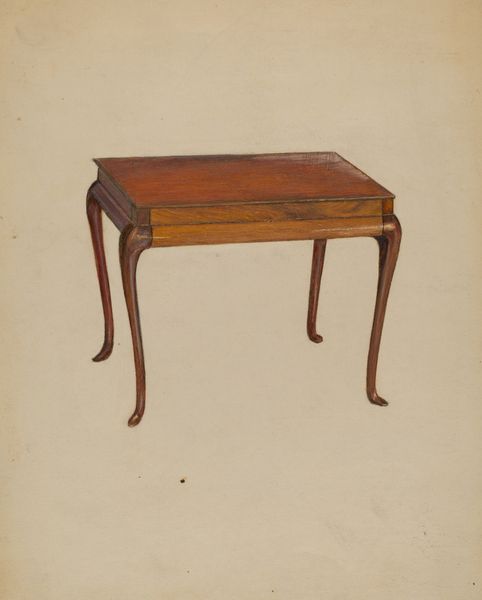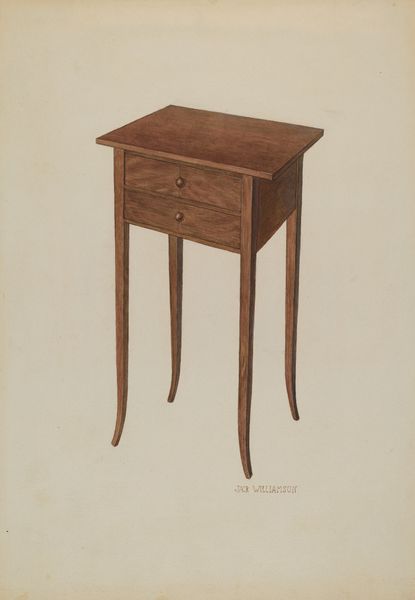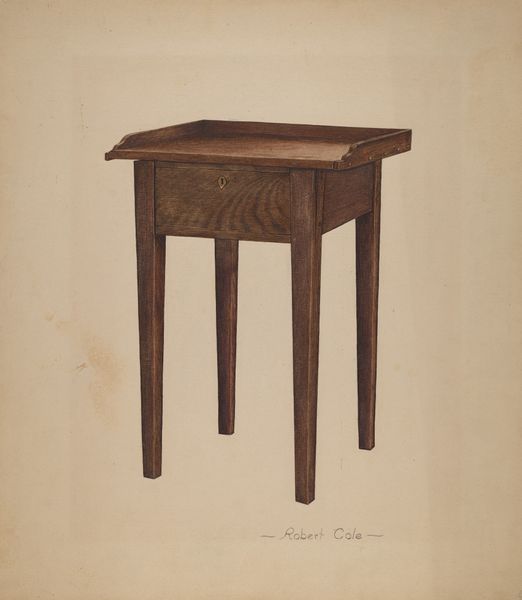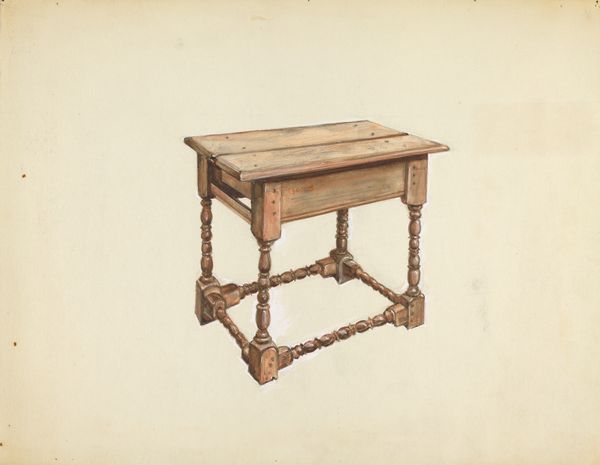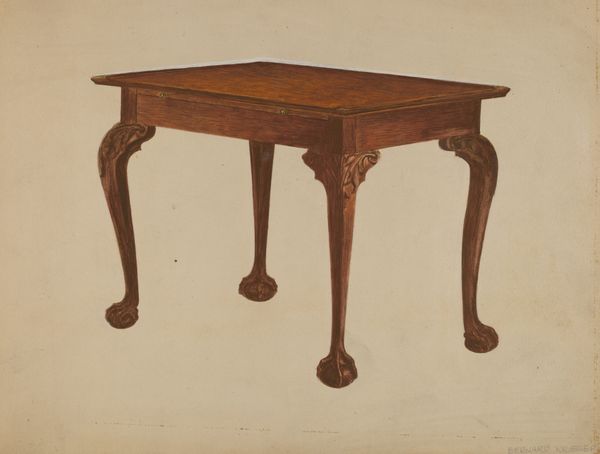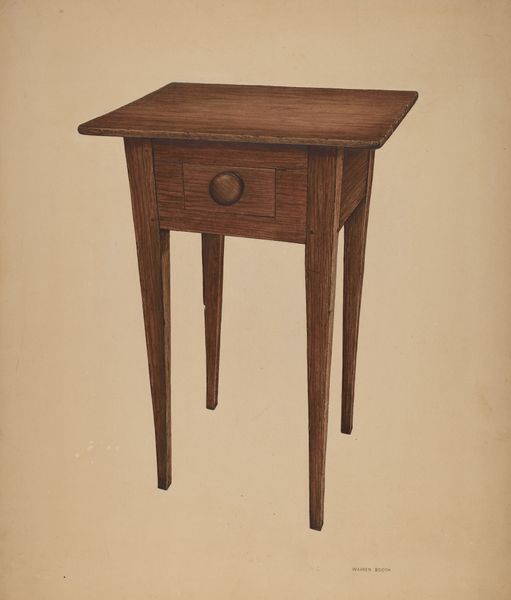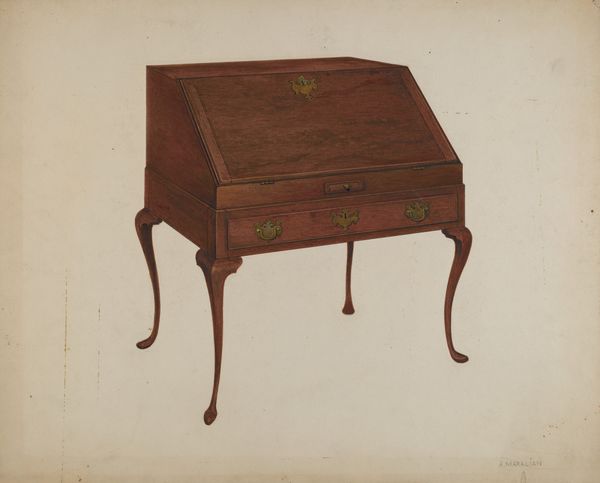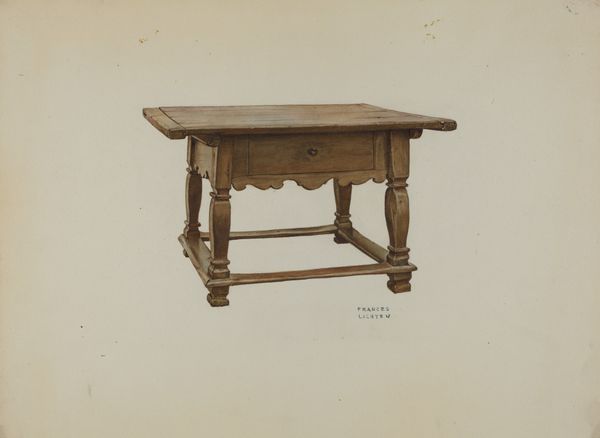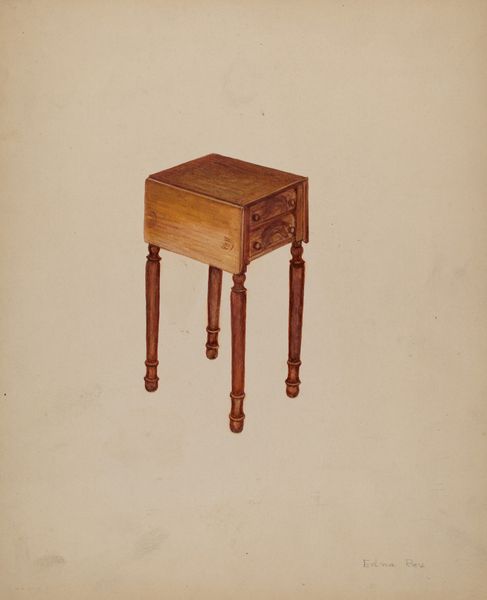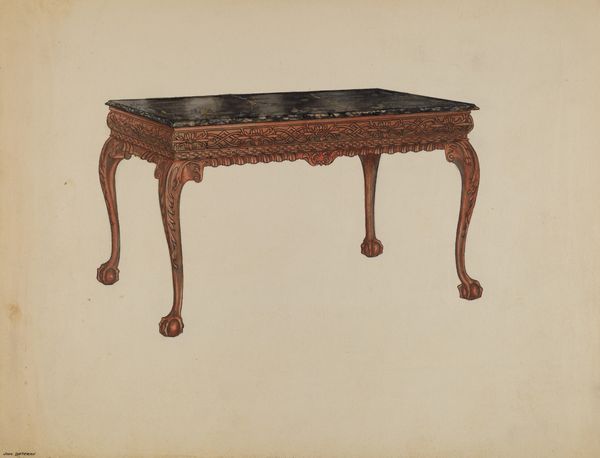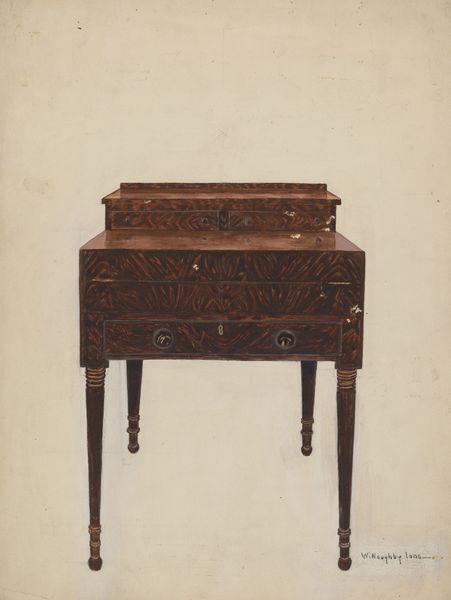
drawing
#
drawing
#
charcoal drawing
#
genre-painting
#
watercolor
#
realism
Dimensions: overall: 40.4 x 51.1 cm (15 7/8 x 20 1/8 in.) Original IAD Object: 29"high, front; 32 3/4"high, back; 36"wide; 25"deep
Copyright: National Gallery of Art: CC0 1.0
Curator: Here we have Frank Eiseman’s "Desk," created around 1939, rendered in watercolor and charcoal. What’s your initial impression? Editor: It has an oddly melancholic feel, doesn't it? Despite the domestic subject, the tight angle and muted tones convey a certain somberness. The lines are precise, but there is an undeniable weightiness. Curator: That’s interesting. Considering its creation during the late Depression era, this desk can be viewed not merely as a piece of furniture, but as a silent witness to countless untold stories. Its solid presence evokes resilience amid economic hardship. What social roles might this seemingly simple desk have embodied? Was it a workspace for the unemployed seeking new opportunities, or perhaps a place for families to manage dwindling finances? Editor: From a formal perspective, look at the economy of line. Eiseman masterfully suggests depth and texture using minimal strokes. The contrast between the dark top and the lighter, patterned wood is particularly striking. It draws your eye in. There's a real sense of compositional harmony here, but then I find myself questioning the function of a drawing like this. Curator: These genre-paintings served a documentary role during times of intense economic and social change, not only reflecting lived experiences but shaping collective memory. This quietly realistic artwork embodies how furniture can transcend its utility and become an evocative marker of an era, and a focal point through which we can begin to consider more broad narratives. Editor: And despite that, its muted palette restricts a fully successful rendering of the wood, while still making subtle textural differences in its depiction. Curator: True. The color choices and realism evoke the weariness and limitations felt in the wake of The Great Depression. We see here, not the exuberance of mass production, but quiet practicality—emphasizing form following function. Editor: It speaks volumes with so few visual elements. It reminds me that even humble, utilitarian objects have their own stories to tell—about construction, and the artist's technique. Curator: Ultimately, seeing beyond its form—situating “Desk” in a nexus of identity and socio-economics opens a compelling dialogue about art, the observer, and the broader canvas of societal structures. Editor: Agreed. And looking closer at the desk’s form reminds us that the most resonant stories are often conveyed through meticulous control of color, and tone.
Comments
No comments
Be the first to comment and join the conversation on the ultimate creative platform.
